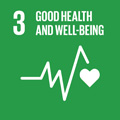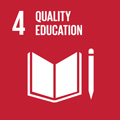- Docente: Michela Valeria Rita Starace
- Credits: 3
- SSD: MED/35
- Language: Italian
- Moduli: Michela Valeria Rita Starace (Modulo 1) Michela Valeria Rita Starace (Modulo 2)
- Teaching Mode: In-person learning (entirely or partially) (Modulo 1); In-person learning (entirely or partially) (Modulo 2)
- Campus: Bologna
- Corso: First cycle degree programme (L) in Podiatry (cod. 8479)
-
from Oct 01, 2025 to Jan 07, 2026
Learning outcomes
At the end of the corse the student will have basic knowledge of the main dermatological diseases, with particular reference to the lower limb and toenails. The student will be able to identify the suspected pathological conditions that need deeper check and will direct the patient to the specialist
Course contents
1. Anatomy and physiology of the skin
2. Anatomy and physical examination of nails
3. Physiology and semiotics of nails
4. Onycoscopy techniques
5. Nail Signs
6. Pathologies of the sole of the foot
7. Traumatic nail diseases
8. Skin and nail viral infections
9. Skin and nail bacterial infections
10. Onychomycosis and cutaneous mycosis
11. Nail psoriasis
12. Nail lichen planus and striatus
13. Ingrown toenail and retronichia
14. The management of pigmented bands of the nail
15. Benign nail tumors
16. Malignant nail tumors
17. Ulcers and difficult wounds
18. Clinic Approach to skin wounds
Readings/Bibliography
Piraccini BM. Le unghie dei Piedi. Manuale pratico per la gestione delle onicopatie. Seconda edizione - Acta Medica Edizioni, Bologna 2024.
Atlas of Nail Signs and Disorders with Clinical and Onychoscopic Correlation - Nilton Di Chiacchio, Nilton Gioia Di Chiacchio, Robertha Carvalho de Nakamura, Michela Starace, Matilde Iorizzo, Robert Baran - Boca Raton - 1 edizione 2024
Teaching methods
Lectures with the aid of slides.
Practical sessions during outpatient visits for nail disorders.
Assessment methods
Oral Exam:
The exam will consist of an interview with the instructor (and/or a committee), during which two or three main questions per module will be asked.
The questions will assess theoretical knowledge, the ability to connect topics, and the use of specific terminology.
The infectious diseases exam (which includes the courses on skin and venereal diseases and infectious diseases) must be taken on the same date for both subjects and will only be considered passed if both exams are successfully completed.
Evaluation Criteria:
The final grade will be based on incremental levels:
Fairly limited knowledge of the topics covered in the course, evident only with the instructor’s assistance, with expression in substantially correct language → 18-19
Limited knowledge of the topics covered in the course, evident independently, with expression in substantially correct language → 20-24
Adequate knowledge of a significant number of topics covered in the course, with a good ability to make appropriate logical-deductive connections and a good command of specific terminology → 25-29
Extensive knowledge of the topics covered in the course, with excellent ability to make appropriate logical-deductive connections and complete mastery of specific terminology → 30-30L
Collaborators:
dr. Stephano Cedirian
dr. Luca Rapparini
Teaching tools
- Teaching materials available for students on the Virtual platform
- Frequency at the Clinic for skin ulcers and nail diseases, Dermatology
Office hours
See the website of Michela Valeria Rita Starace
SDGs




This teaching activity contributes to the achievement of the Sustainable Development Goals of the UN 2030 Agenda.
